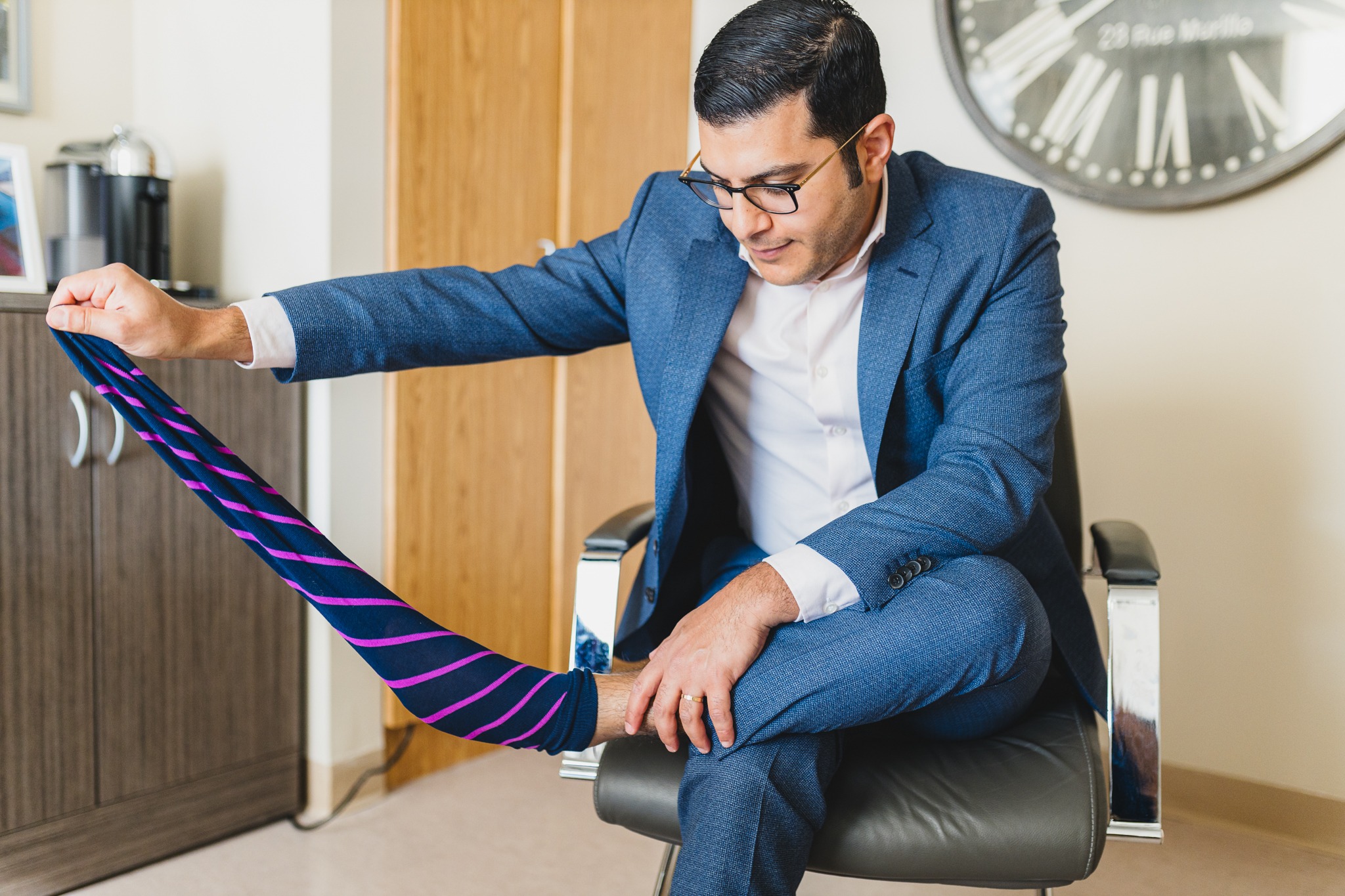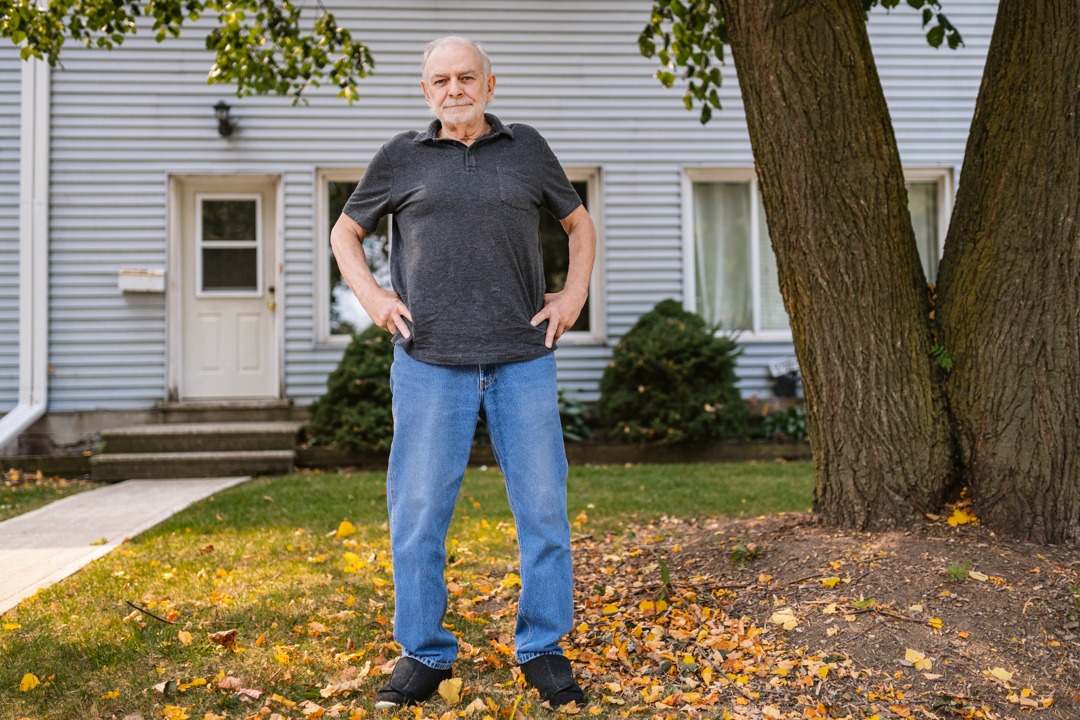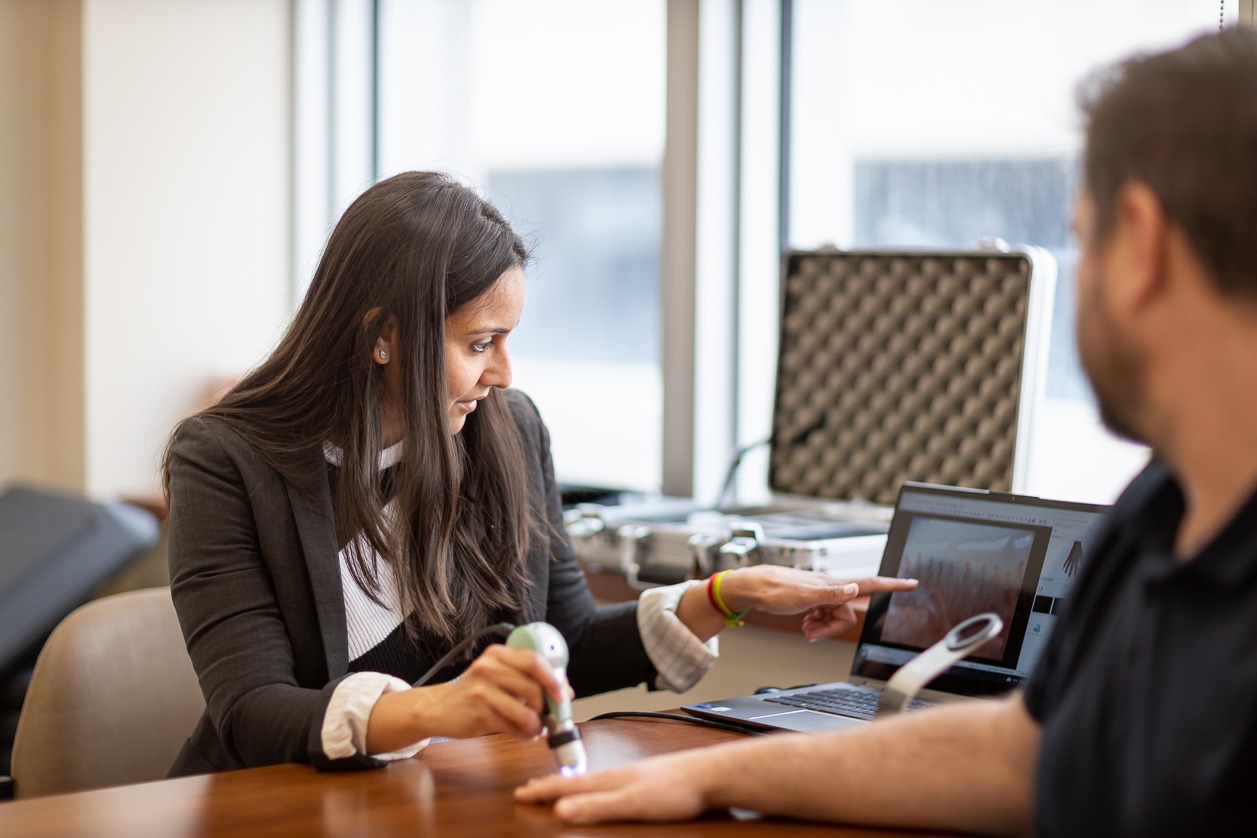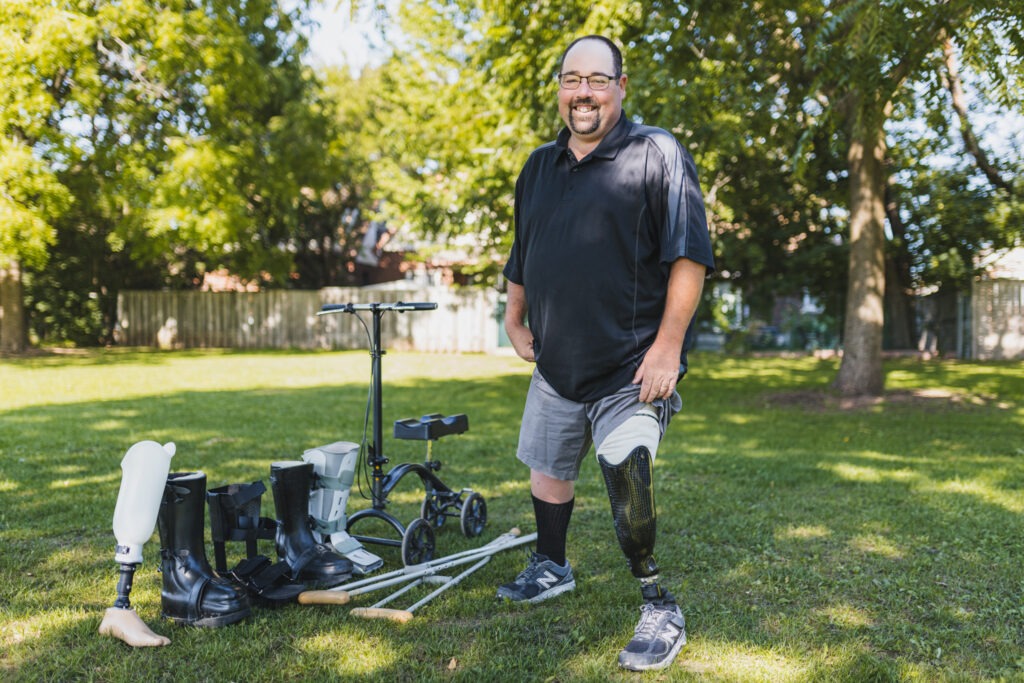
“By sharing my story, I’m hoping to help others avoid amputation”
A Hamilton man who had his left lower limb amputated due to diabetes-related complications is throwing his support behind a local awareness campaign aimed at preventing others from suffering a similar fate.
“Diabetes doesn’t care if you’re young, old, thin or overweight,” says 47-year-old Steve Jennings, who was diagnosed with type 2 diabetes in his early 20s. “You may not experience symptoms for years, but when they do show up they can be severe, persistent and irreversible.”
“I was a young man. I didn’t think having diabetes would affect me.”

Steve Jennings, Socks Off! campaign patient ambassador
Ontario has among the highest rates in the world for diabetes-related foot amputations, with lower Hamilton having the highest rates locally. Hamilton Health Sciences together with the Greater Hamilton Health Network Ontario Health Team launched a Socks Off! campaign in July which aims to reduce the number of lower Hamilton residents who are at risk of losing a lower limb to amputation due to diabetes and/or vascular disease.
Aimed at family doctors and other health-care providers in Hamilton’s downtown core, the campaign encourages them to routinely check the bare feet of their patients with diabetes and vascular disease. That’s why the campaign is called Socks Off! Jennings, who lives in lower Hamilton, is a patient ambassador for the campaign. He’s sharing his experiences with diabetes complications, including a limb amputation, to help raise awareness.
A serious illness
A complication of diabetes and vascular disease is poor circulation, which can lead to serious problems from something as simple as a cut or crack in the skin.
Jennings says it can be easy to ignore a diabetes diagnosis, especially if people aren’t experiencing symptoms. “It wasn’t impacting my lifestyle in any way, so I didn’t take steps to manage it. I was a young man. I didn’t think having diabetes would affect me.”
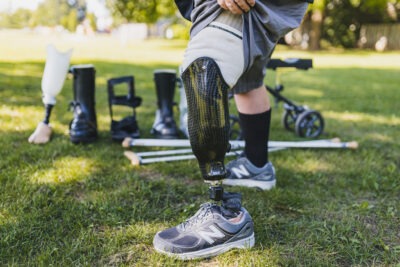
After years of trying to save his lower limb, Steve Jennings decided on an amputation.
Ten problem-free years went by, then one night after refereeing a hockey game Jennings noticed a blister on his right foot. When a person with diabetes sees any sign of a wound developing, they’re supposed to get off their feet completely, and immediately and call their doctor. Jennings didn’t know this. Soon, blisters developed on both feet, morphing into multiple, limb-threatening ulcers.
“From there, things just got worse and worse,” says Jennings. While his right foot eventually healed, he experienced years of persistent, serious diabetic foot complications with his left foot.
Jennings was now taking medication to manage his diabetes. After trying different treatments including surgery to heal his foot, nothing worked. The foot’s inability to heal, combined with unrelenting, excruciating pain, caused Jennings and his doctors to make the difficult decision, three years ago, to have his left foot amputated.
“If I had known more about diabetes when I was younger, taken my medication regularly and kept a close eye on my feet, things could have been very different,” says Jennings. “I wish I had taken it more seriously. By sharing my story I’m hoping to help others.”
Exhausting options
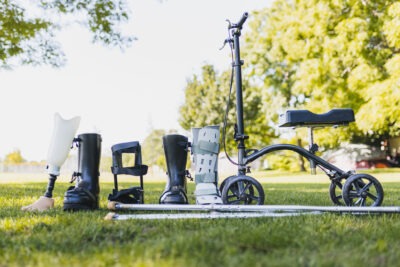
Steve Jennings spent six years trying treatments that included wearing a special boot, called a CROW (Charcot restraint orthotic walker), a total contact cast and a knee walker to help diabetic ulcers heal by reducing pressure at the wound site.
Jennings’ diabetic wound specialist, Dr. Perry Mayer, is helping to lead the Socks Off! campaign. Mayer is medical director of The Mayer Institute in Hamilton, a centre of excellence in treating the diabetic foot and its complications.
“Dr. Mayer did everything possible over the years to try and save my foot,” says Jennings, who spent six years trying treatments that included wearing a special boot, called a CROW (Charcot restraint orthotic walker), a total contact cast and a knee walker to help diabetic ulcers heal by reducing pressure at the wound site.
Jennings underwent surgery for Charcot foot, a complication of diabetes-related nerve damage that causes deformity and can make injuries or infections much more serious. “I went through an extensive reconstruction of my left foot which came with a year of recovery,” says Jennings.
Nothing worked.
New normal
Before diabetes complications appeared, Jennings played baseball and hockey, and also refereed both sports. Diabetes also took a mental-health toll, because he was no longer able to play the sports he loved due to the years of complications and the amputation.
“Mentally it’s extremely hard to go through all this,” says Jennings. “I’ve tried skating since my amputation, and it was like I was four years old again and going out on the ice for the first time.”
He plans to try again and may also take up sledge hockey, which he has tried and enjoyed. He has also umpired baseball since his amputation. “Life certainly isn’t over because of the amputation, but it definitely changes how you do things.”
Hear Steve share his story:
Staying healthy
People with diabetes may not be aware of foot injuries because they’ve lost feeling in their feet from abnormal blood sugars attacking the sensory nerves.
Jennings checks his right foot daily for cuts, blisters, cracks, callouses or other sores that could lead to a serious ulcer and amputation. He also sees Mayer every six weeks for ongoing monitoring.
By following these three steps every day, that 85 per cent of diabetic foot problems can be prevented:
- Always wear properly fitted shoes, even indoors. Shoes protect feet from wear-and-tear or cuts that could lead to infection or amputation.
- Moisturize feet every day to keep skin supple, so it’s less likely to crack or break. This helps prevent an ulcer from developing that could lead to a potential amputation.
- And look at your feet every day, including in between toes. If you see any sign of a wound developing, get completely off your feet right away and call your health-care provider for an appointment.
People with diabetes should take the initiative with their primary care provider by asking for a foot check at appointments. It’s recommended that soon as patients get into the examination room, they take off their socks. It’s a reminder for the primary care provider to check their patients’ feet, and it saves time too.

